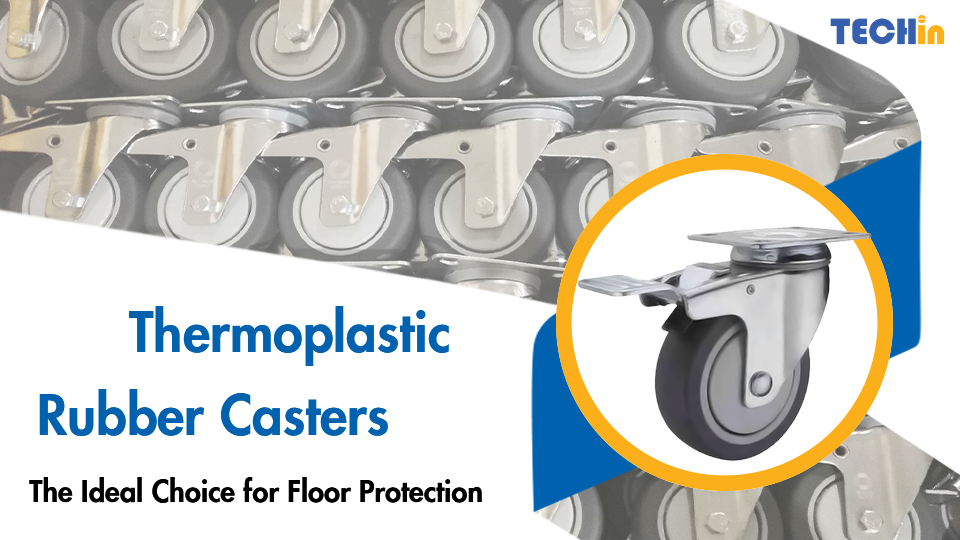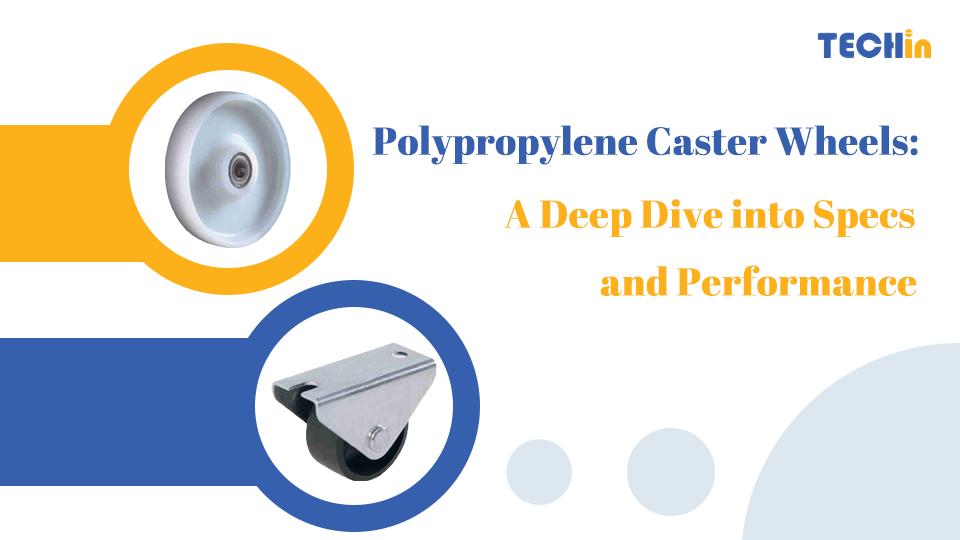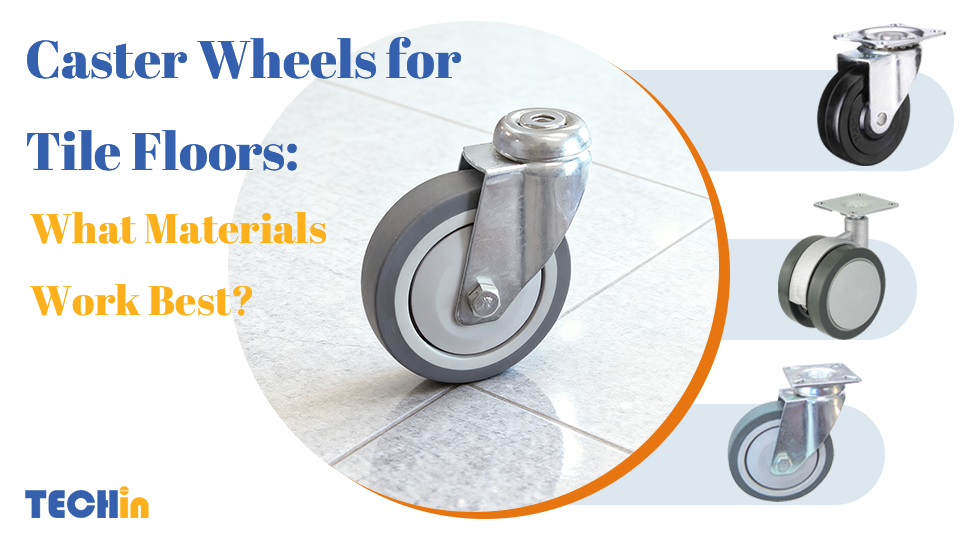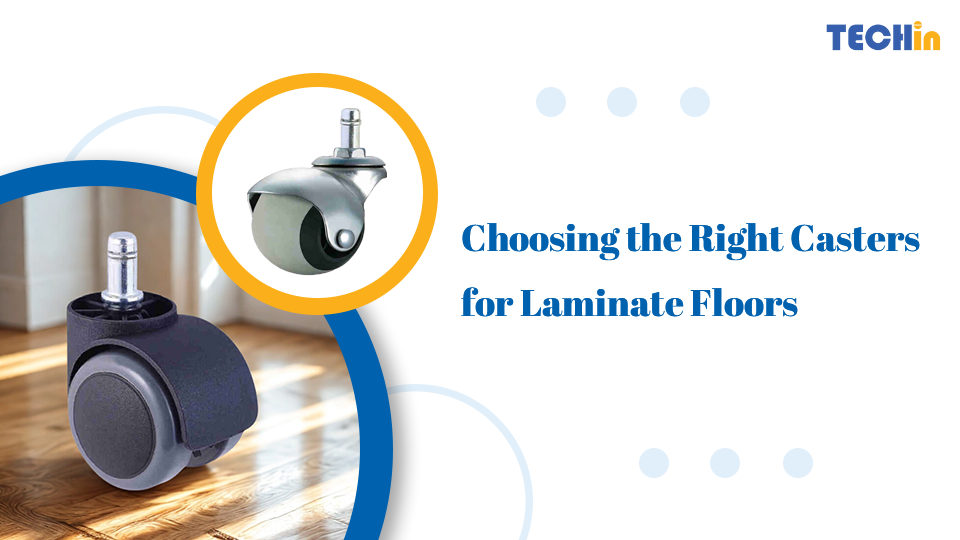Introduction
When it comes to choosing the right caster wheels, it’s important to consider floor protection. Hard or low-quality wheels can scratch, mark, or make noise, damaging floors over time. Thermoplastic rubber (TPR) casters are a great option because they combine the durability of plastic with the flexibility of rubber.
In this article, we’ll look at what makes TPR casters different from other materials. We’ll also cover their benefits, uses, and how to choose the best TPR casters for your needs.
What Are TPR Casters?
TPR casters are made from thermoplastic rubber, a material that combines the elasticity of rubber with the durability of plastic. These wheels are typically mounted on metal or plastic frames and are designed for smooth, quiet, and non-marking movement.
Key Features of TPR Casters:
- Soft and flexible like natural rubber
- Resistant to chemicals and water
- Non-marking and floor-friendly
- Low rolling resistance for easy maneuverability
- Ideal for noise-sensitive environments
What Are the Advantages of TPR Casters?
Thermoplastic rubber caster wheels offer multiple benefits that make them a preferred choice across industries.
✅ Floor Protection
TPR casters do not leave marks or scratches on floors, making them ideal for hardwood, tile, and laminate surfaces.
✅ Smooth & Silent Operation
Their soft composition absorbs shock and reduces noise, making them suitable for hospitals, offices, and homes.
✅ Durability & Resistance
TPR resists chemicals, moisture, and wear, ensuring a long lifespan even in demanding environments.
✅ Easy Maneuverability
With low rolling resistance, TPR casters glide effortlessly, reducing strain when moving furniture or equipment.
✅ Versatility
They are used in furniture, medical equipment, industrial carts, and retail displays due to their balance of strength and flexibility.
What Are the Uses of TPR Casters?
TPR caster wheels are widely used in industries that require quiet, smooth mobility without damaging floors.
🏠 Furniture Industry
- Office chairs
- Home furniture (sofas, cabinets, tables)
- Retail store fixtures
🏥 Medical Applications
- Hospital beds and stretchers
- Medical carts and trolleys
- Wheelchairs and mobility aids
Ideal for Quiet Places
- Libraries and schools
- Hotels and resorts
- Laboratories and offices
Why Are TPR Casters the Ideal Choice for Floor Protection?
Not all casters are designed to be gentle on floors. Some materials, like metal or hard plastic, can cause scratches, while rubber casters may leave residue. TPR casters excel in floor protection because they are:
- Soft but strong – They cushion impact while maintaining durability.
- Non-marking – Unlike traditional rubber wheels, TPR does not leave black streaks.
- Shock-absorbing – They reduce impact damage to floors and surfaces.
- Gentle on delicate flooring – Ideal for hardwood, tile, vinyl, and laminate.
If you need caster wheels that ensure both smooth mobility and floor safety, TPR casters are the best option.
How to Choose TPR Casters?
When selecting thermoplastic rubber caster wheels, consider the following factors:
🛠️ Load Capacity
Choose casters with the right weight rating to support your furniture or equipment.
🛠️ Wheel Size
Larger wheels roll more easily and distribute weight better, reducing wear on floors.
🛠️ Mounting Type
There are three main types:
- Plate-mount casters (attached with screws)
- Stem-mount casters (inserted into furniture legs)
- Threaded casters (adjustable for different surfaces)
🛠️ Locking Mechanism
Casters with brakes or locking systems provide added safety, preventing unwanted movement.
🛠️ Swivel vs. Fixed Casters
- Swivel casters rotate 360° for easy maneuvering.
- Fixed (rigid) casters move in a straight line for stability.
By choosing the right type and size of TPR casters, you ensure smooth mobility and floor protection.
Maintenance Tips for TPR Casters
To maximize the lifespan of your TPR caster wheels, follow these maintenance tips:
✔ Regular Cleaning – Remove dirt, hair, and debris to prevent buildup.
✔ Lubricate Bearings – Apply lubricant to keep movement smooth and noise-free.
✔ Inspect for Wear – Check for cracks or flat spots and replace damaged wheels.
✔ Avoid Excessive Weight – Do not overload casters to maintain performance.
✔ Store in a Dry Environment – Keep casters away from extreme temperatures and moisture.
Conclusion
Thermoplastic rubber caster wheels are great for protecting floors, moving smoothly, and operating quietly. Whether you’re using them for furniture, medical applications, or in sensitive environments, they’re a reliable and durable solution.
By choosing high-quality TPR casters and maintaining them properly, you can move things around easily without damaging your floors.
Frequently Asked Questions (FAQ)
1. What is the difference between TPR and rubber casters?
TPR casters are non-marking, quieter, and more resistant to chemicals than traditional rubber casters. Rubber casters can leave black streaks and may wear down faster over time.
2. Is thermoplastic rubber the same as latex?
No, thermoplastic rubber is synthetic and does not contain natural latex. It is safer for people with latex allergies and offers better durability.
3. What is the difference between TPR and polyurethane (PU) wheels?
- TPR wheels are softer, quieter, and better for floor protection.
- PU wheels are more durable, have higher load capacity, and work well on rough surfaces.
4. What are the disadvantages of TPR material?
- Lower weight capacity compared to polyurethane or metal wheels.
- Less heat resistance, making them unsuitable for high-temperature environments.
- May attract dust due to their softer composition.
5. Are TPR casters suitable for outdoor use?
While TPR casters resist water and chemicals, they are best suited for indoor use. For rough outdoor surfaces, polyurethane or rubber casters might be a better choice.










